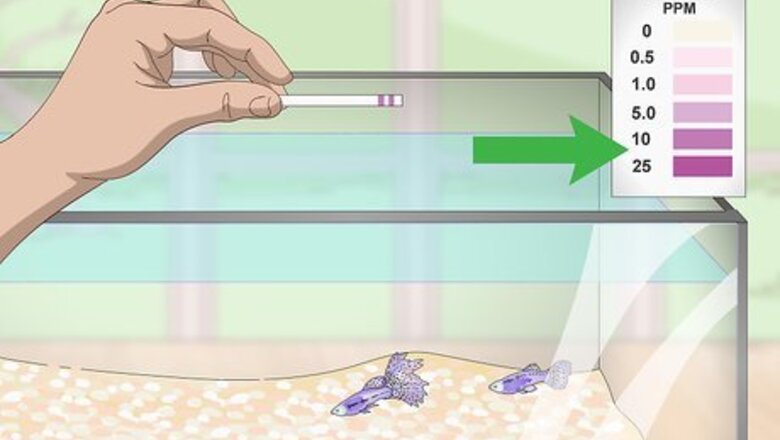
views
Testing and Adjusting Nitrate Levels
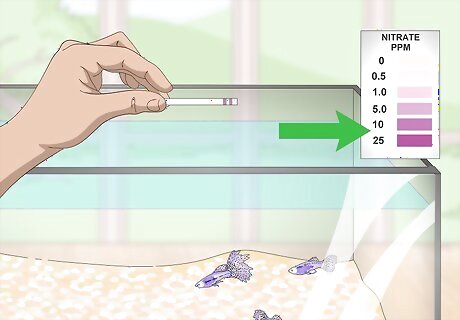
Use a test strip to determine if the nitrate levels are high. Purchase nitrate level test strips at a pet supply store. Dip the strip into the water and read the results on the strip. The nitrate levels in your fish tank should never go above 40 ppm, and ideally the level should stay under 20 ppm. Test your fish tank’s water weekly to ensure that the nitrate levels are always within this range. High nitrate levels can lead to disease and death in fish, so it is crucial that you monitor the levels in your tank. High nitrate levels may also contribute to algae overgrowth, which will make your fish tank look dirty and unattractive.
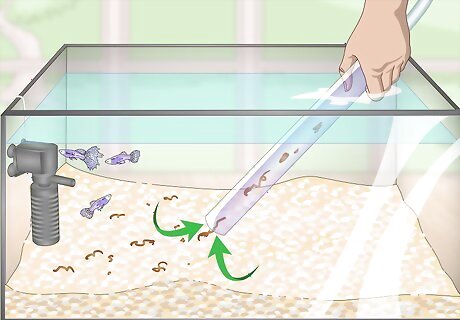
Vacuum the bottom of your aquarium to remove waste and lower the nitrate level. Since waste products are a primary cause of elevated nitrate levels in fish tanks, it is important to clean out the waste from the bottom of the tank regularly. If you test your tank and levels are high, use a fish tank vacuum to clean in and under the gravel in the bottom of the tank. Make sure to remove your fish and put them into a temporary tank while you vacuum the substrate. Do not vacuum the tank while your fish are in it!

Remove and replace about 25% of the water in the tank to lower the nitrate level. Removing too much water at once will shock your fish and this may make them sick, or even kill them. To avoid this, only take out about 25% of the water at a time and then replace it with fresh, low-nitrate water. Make sure that the water you use does not have a nitrate level above 40 ppm. Use the same test strips that you used to test your fish tank to test your tap water. If the nitrate level is above 40 ppm, you may need to purchase water for your fish tank from a pet store.
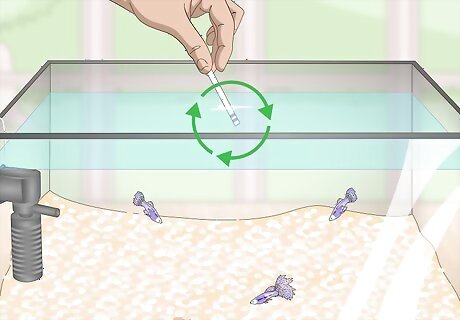
Retest after a few days to check the new level. Once you have cleaned the tank and added the new water, dip a test strip into the tank to test the water again. Your fish tank’s water is in the right range if the levels are under 40 ppm. Plan to make further adjustments if the nitrate level is still above 40 ppm, or if you want to try to get the level even lower, such as under 20 ppm.
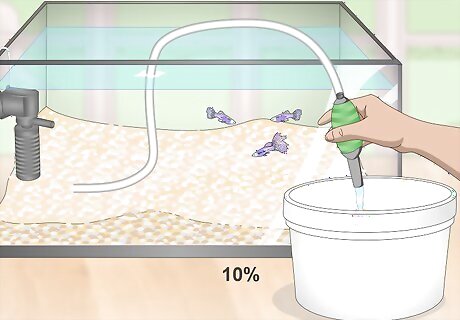
Replace 10% of the water each day if you still need to lower the nitrate level. You will need to make additional adjustments to your tank’s water over the next few days if they are not in the right range when you retest them. Remove and replace an additional 10% of the water per day until the levels are where you want them to be. For example, if the new level is 45 ppm, then replace 10% of the tank water the following day and test it again. Keep doing this until the level is at or near 20 ppm.Setting up a new fish tank? Nitrate buildup is a common problem with new fish tanks, but getting the nitrate levels right requires that you cycle the tank before putting your fish in it. This is a crucial part of preparing the fish tank for your fish so that they do not die when you put them into it!
Preventing Nitrate Buildup
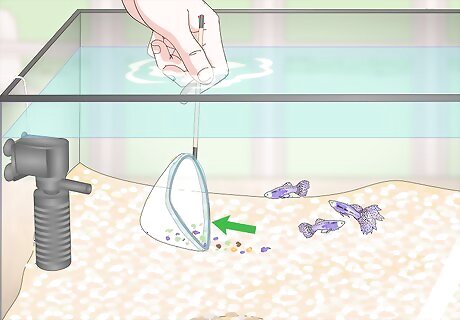
Clean up any leftover food or other waste products right away. Nitrate levels increase as a result of your fish’s uneaten food and waste. Spot clean your tank daily by scooping out uneaten food and visible waste products with a net. This will help to prevent the nitrate levels from rising and save you from having to replace water in the tank as much. Check your fish tank about 5 to 10 minutes after feeding your fish and scoop out any uneaten food that you notice.
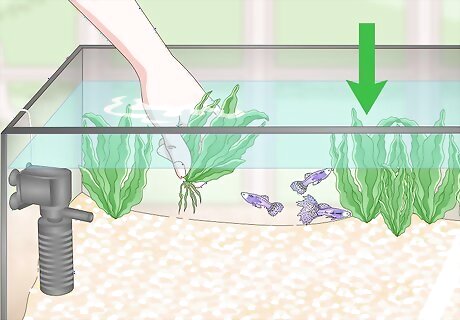
Place plants into the aquarium to absorb excess nitrate. Keeping live plants in your aquarium may also help to keep the nitrate levels under control. Try putting a few live plants in the aquarium that grow under or above the water. Check your local pet store for plants that will work with your tank. Try adding mangrove to your tank for a plant that will grow out of the water with its roots below it.
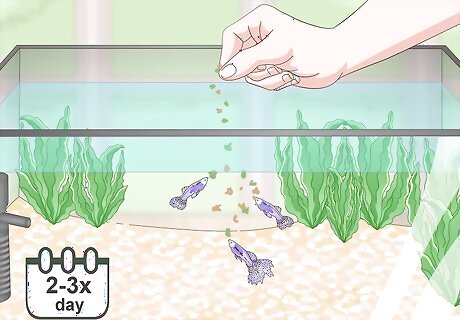
Feed your fish smaller amounts 2 to 3 times daily. This will help to reduce the buildup of waste in the tank from uneaten food. Divide the amount that you would normally give them in 1 feeding per day into 2 or 3 amounts. Feed your fish in the morning and evening, or morning, noon, and evening. It should not take your fish more than 2 minutes to finish eating and there should not be much or any food left behind when they finish. If it does, then you are likely feeding them too much.Wondering about how to properly feed your fish? Choose food that is formulated for the type of fish you have, and check to ensure that you are offering them an adequate amount for their needs.

Avoid overcrowding your fish tank. The general rule of thumb is to have 1 inch (2.5 cm) of adult fish per 1 gallon (3.8 L) of water. Some aquarium owners will also divide the number of fish they could keep in a tank in half to ensure that the tank is not overcrowded. For example, if you have a 30 gallon (113.6 L) tank, then you could keep 30 1 in (2.5 cm) long fish in it, but you may want to only keep 15 in the tank to ensure that the tank will not be overcrowded.
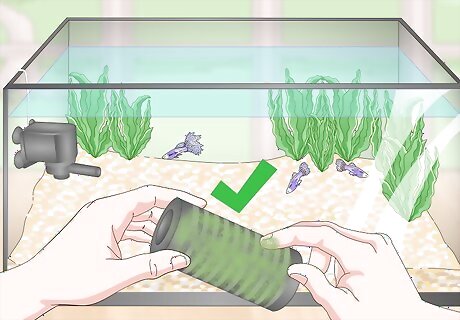
Check your aquarium filter regularly to spot clogs. Although the filter in your aquarium cannot adjust the nitrate levels, a clog in the filter may be increasing the nitrate levels. This is because the clog may be from excess food or other waste products in the tank that are being cycled back into the water. Look in the filter once per week to ensure that there are no clogs and remove them if there are. Ensure that the filter you are using for your tank is working properly as well. If it seems to get clogged often, then you may want to replace it. EXPERT TIP Doug Ludemann Doug Ludemann Professional Aquarist Doug Ludemann is the owner and operator of Fish Geeks, LLC, an aquarium services company based in Minneapolis, Minnesota. Doug has worked in the aquarium and fish-care industry for over 20 years, including having worked as a professional aquarist for the Minnesota Zoo and Shedd Aquarium in Chicago. He received his Bachelor of Science in Ecology, Evolution, and Behavior from the University of Minnesota. Doug Ludemann Doug Ludemann Professional Aquarist Our Expert Agrees: All of the poop and excess food inside your filters will break down into ammonia and go back into your aquarium. This causes nitrate to buildup, which you need to remove with water changes.




















Comments
0 comment